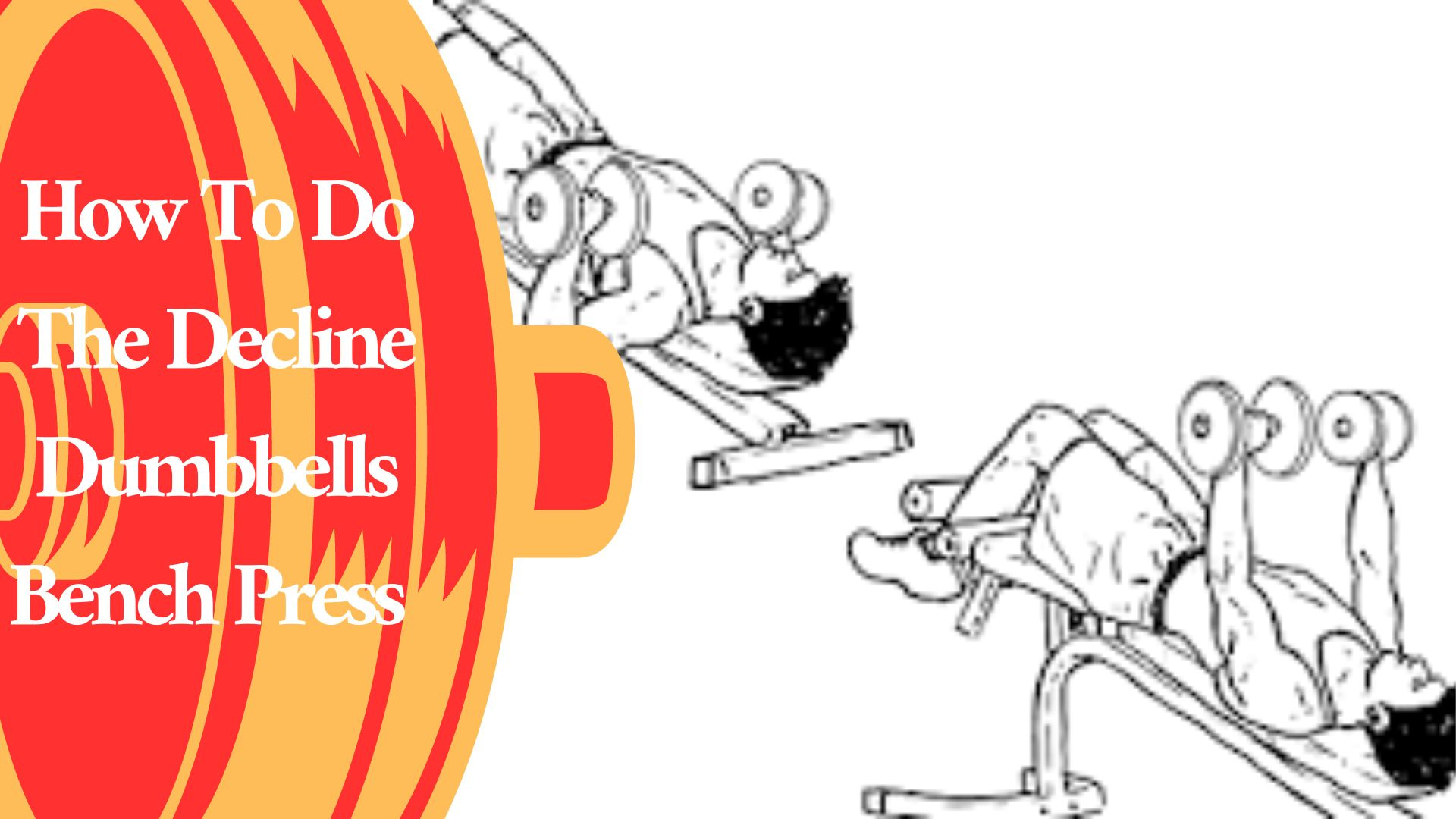The decline bench press is a variation of the traditional bench press, with the bench set at a decline angle. Using dumbbells allows for a more excellent range of motion and engages the chest muscles more effectively than a barbell.
This guide will provide you step-by-step instructions for performing the decline bench press for the low chest with dumbbells. I will cover the setup, proper technique, and essential tips to maximize your workout and avoid injury.
List Of Steps to Do The Decline Bench Press For Low Chest With Dumbbells
- Set up your equipment
- Lie down on the bench
- Lower the dumbbells
- Press the dumbbells up
- Repeat the exercise
- Stretch after your workout
-
Set up your equipment.
Setting up your equipment is the first step to doing the decline bench press for the low chest with dumbbells. Having the right equipment and setting it up properly before starting the exercise is essential to ensure safety and effectiveness.
It includes finding a decline bench suitable for your height and weight, selecting a set of dumbbells you can comfortably lift for several reps, and adjusting the bar to a decline angle targeting your lower chest.
Once your equipment is set up, you can focus on proper form and technique while performing the exercise.
-
Lie down on the bench.
After setting up your equipment, the next step to doing the decline bench press for the low chest with dumbbells is lying on the bench. Start by placing your feet at the end of the court. Your back should be flat against the bar, and your head, shoulders, and hips should be straight.
Hold the dumbbells with your palms facing forward and your elbows at a 45-degree angle to your body. This starting position ensures that you effectively engage the lower chest muscles throughout the exercise.
Remember to keep your core engaged, and your feet firmly planted to maintain stability and prevent injury. Once you are in the correct starting position, you can begin the exercise by lowering the dumbbells toward your lower chest.
-
Lower the dumbbells
The next step in doing the decline bench press for the low chest with dumbbells is to lower the dumbbells towards your lower chest. This movement engages the chest muscles and helps to build strength in the lower compartment.

As you lower the dumbbells, keep your elbows at a 45-degree angle to your body. It ensures that you’re engaging the chest muscles properly and prevents injury.
Lower the dumbbells slowly and with control until your upper arms parallel the ground or slightly below. Don’t lower the dumbbells too quickly or bounce them off your chest, which can cause injury. Once you reach the bottom of the movement, pause briefly before starting the upward motion.
-
Press the dumbbells up.
The next step in doing the decline bench press for the low chest with dumbbells is to press the dumbbells up toward the starting position.
This movement engages the chest muscles and helps to build strength in the lower compartment. As you press the dumbbells up, focus on using your chest muscles to power the movement.
Once you reach the top of the movement, pause and squeeze your chest muscles before starting the downward motion. Yohe dumbbell pressing slowly and controlled to work the muscles and minimize the risk of injury effectively. Repeat the exercise for 3-4 sets of 8-12 reps, resting for 60-90 seconds between sets.
-
Repeat the exercise
After completing a set of the decline bench press for a low chest with dumbbells, the next step is to repeat the exercise.
The number of sets and reps will depend on your fitness level and goals, but a general guideline is to do 3-4 sets of 8-12 reps. Taking breaks between groups is essential for your muscles to rest and recover.
Sleeping for 60-90 seconds between sets is typically recommended. Remember to focus on proper form and technique throughout the exercise to avoid injury and ensure that you’re effectively working the lower chest muscles.
-
Stretch after your workout.
Stretching after your workout is crucial to doing the decline bench press for the low chest with dumbbells. Stretching can help reduce muscle soreness, improve flexibility, and increase your range of motion.
Some effective chest stretches include the doorway stretch, the wall stretch, and the arm-across-chest stretch. The doorway stretch involves:
- Standing in a doorway with your arms outstretched.
- Placing your hands on the doorframe.
- Leaning forward to stretch your chest muscles.
The wall stretch involves placing your hands on a wall and leaning forward to stretch your chest muscles. The arm-across-chest stretch involves pulling one arm across your chest and holding it with the opposite arm to stretch your chest muscles.
Hold each time for 15-30 seconds and repeat on each side. Incorporating stretching into your workout routine can help improve your overall fitness and reduce the risk of injury.
Equipment Needed
To perform this exercise, you need a decline bench and a pair of dumbbells. On the decline bench press, it advised performing it by starting with lightweight because compared to incline bench press where you are in the incline position.
On decline chest bench press you are in the decline position so it is better to get started with lightweight, do not overweight your for you might find it difficult to control the weight properly. Get used to getting the weight in place before moving up to doing it.
Or you may want to rest the weight on your knees at the “top” of the movement as you get into the position and bring them back to your chest as you get into the position.
Safety Measures
Here are the safety measures to take during the decline dumbbell bench press.
- Keep a correct position and use overhand grips. Your position should be well in line with the exercise. Your feet must be planted firmly during the exercise. Grasp two dumbbells in an overhand grip, keeping your elbows out and away from the trunk of your body.
- Don’t move too fast concentrate. Do not overweight bend your arms slowly and carefully lower both dumbbells.
- Focus and concentrate don’t let the weight stray or fall off from your. Hands hold it well. Do not bounce the weight from your chest. Make sure that the dumbbells held directly over your chest area, slightly touching each other with palms facing forward.
Benefits
- It helps train and boosts more extra chest muscles.
- It helps in training the triceps and the front of the shoulders and it also helps build good definition to the chest.
- The decline dumbbell bench press is one of the great exercise that trains and gives you more extra chest muscle.
- It targets and trains the lower chest better than any other exercise.
Final Thoughts
In conclusion, the decline bench press with dumbbells effectively targets the lower chest muscles. It is essential to select a weight that you can control throughout the exercise and make sure to inhale during the lowering phase and exhale during the lifting phase.
It is also beneficial to keep your neck aligned with your spine throughout the exercise and your feet firmly on the ground for stability.
Furthermore, ensure you perform each repetition slowly and with good form for maximal benefit from each repetition.


